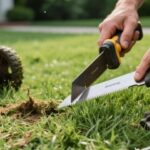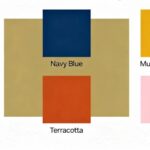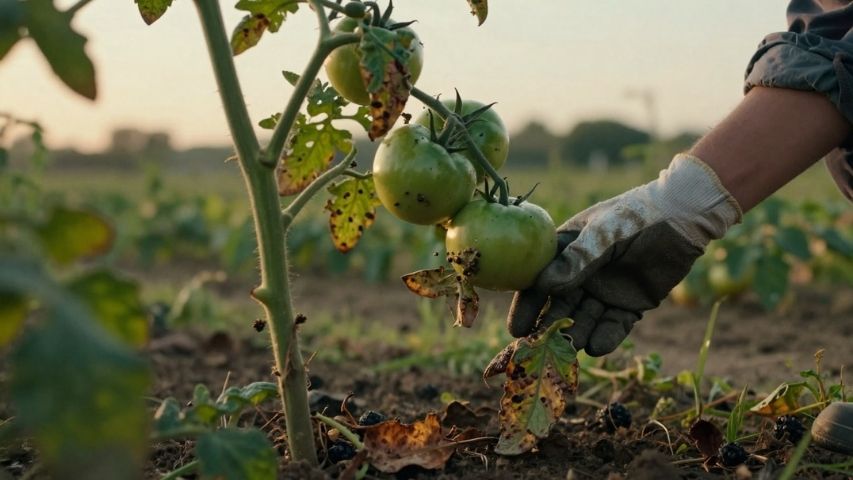Sticky residue on wood can be annoying, but it’s easy to remove. Whether it’s tape, glue, or some unknown mess on your table, you can clean it up yourself without using harsh chemicals or calling in a professional.
This guide walks you through seven proven DIY methods to safely remove sticky residue from any wood surface. From gentle solutions for delicate finishes to heavy-duty options for stubborn messes, you’ll find the right approach for your specific situation. Let’s restore your wood’s natural beauty.
What Causes Sticky Residue on Wood?
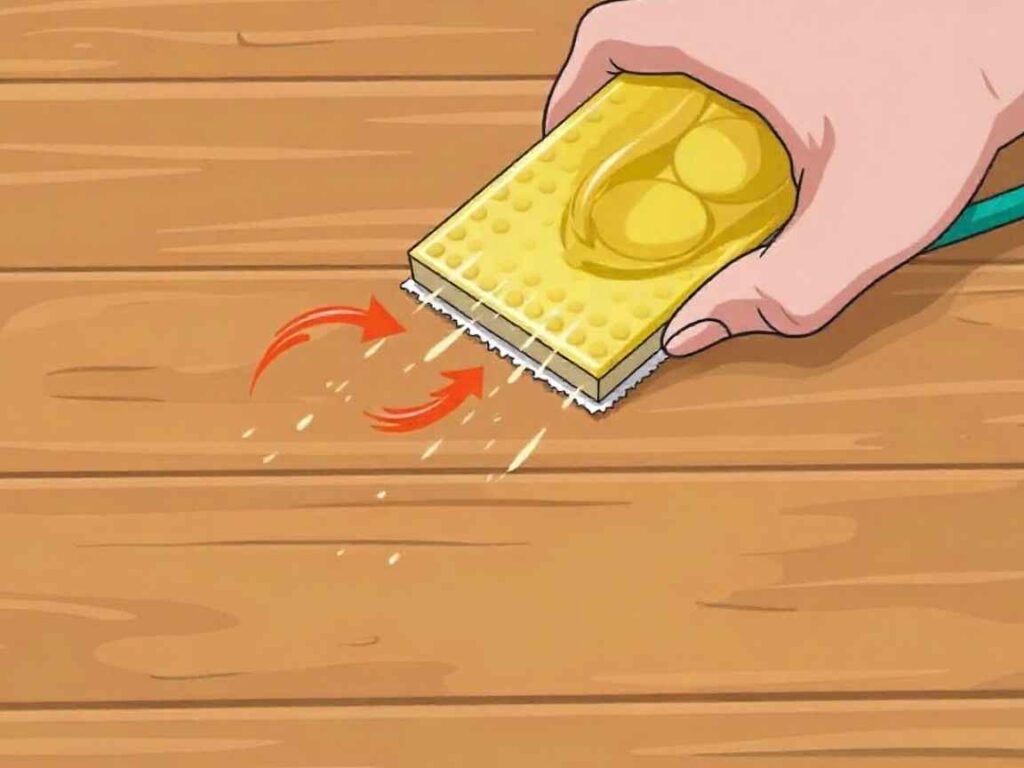
Knowing where the sticky residue comes from helps you pick the best way to remove it. Here are the most common sources:
Finish breakdown: Heat can break down varnish or lacquer, creating a tacky surface. Improperly dried finishes also leave sticky patches. (How to Remove Sticky Residue from Wood: 7 DIY Methods for Every Mess, n.d.)
Adhesive tape and stickers: Peeling off labels, stickers, or tape often leaves glue behind on the wood.
Spilled substances: Candle wax, oils, or liquid adhesives can seep into wood grain and create persistent sticky spots.
DIY materials: Glue, epoxy, or resin that drips during projects dries into stubborn residue.
Furniture polish: Some polishes containing wax or oil build up over time and turn sticky. (5 Reasons Why Wooden Tables Become Sticky (Plus Fix), n.d.)
Quick Reference: Which Method Should You Use?
| Type of Residue | Best Method | Strength | Special Notes |
| Fresh stickers or light glue | Hair Dryer | Gentle | Safe for all finishes |
| Light buildup on finished wood | Soap Cleaning | Gentle | Use properly diluted |
| Sealed or varnished wood | Vinegar + Water | Mild | Test on delicate finishes first |
| Finished or delicate surfaces | Oil-Based Solutions | Mild to Moderate | Clean with soap after |
| Heavy sticky residue | Commercial Removers | Moderate | Finished wood only |
| Deep residue on durable wood | Rubbing Alcohol | Strong | May affect some finishes |
| Unfinished wood only | Acetone | Very Strong | Strips finishes completely |
7 Methods to Remove Sticky Residue from Wood
1. Hair Dryer — Safest for Delicate Finishes

A hair dryer can loosen sticky glue without harming the wood. It’s especially good for removing stickers, tape, or light glue from any finish. (How to Remove Glue From Wood | Airtasker US, n.d.)
What you’ll need:
- Hair dryer
- Plastic card (old credit card works well)
- Soft cloth
Steps:
- Set your hair dryer to low or medium heat.
- Hold it 2-3 inches from the sticky area and warm for 30-60 seconds.
- Once the adhesive softens, gently scrape with the plastic card.
- Wipe clean with a soft cloth.
- If residue remains, move to the next method.
2. Soap Cleaning — Best for Light Buildup
Mild soap is great for cleaning up light residue and won’t damage finished wood. (What Is Considered a Mild Soap for Cleaning Wood?, n.d.)
What you’ll need:
- Murphy’s Oil Soap or Dawn dish soap
- 1 cup warm water
- Microfiber cloth or soft sponge
- Dry towel
Steps:
- Mix one tablespoon of soap into one cup of warm water.
- Dampen your cloth in the solution and wring out excess water.
- Rub the sticky area in small circles or along the wood grain.
- Wipe dry with a clean towel.
- Repeat if needed
3. Vinegar + Water — Natural Solution for Sealed Surfaces
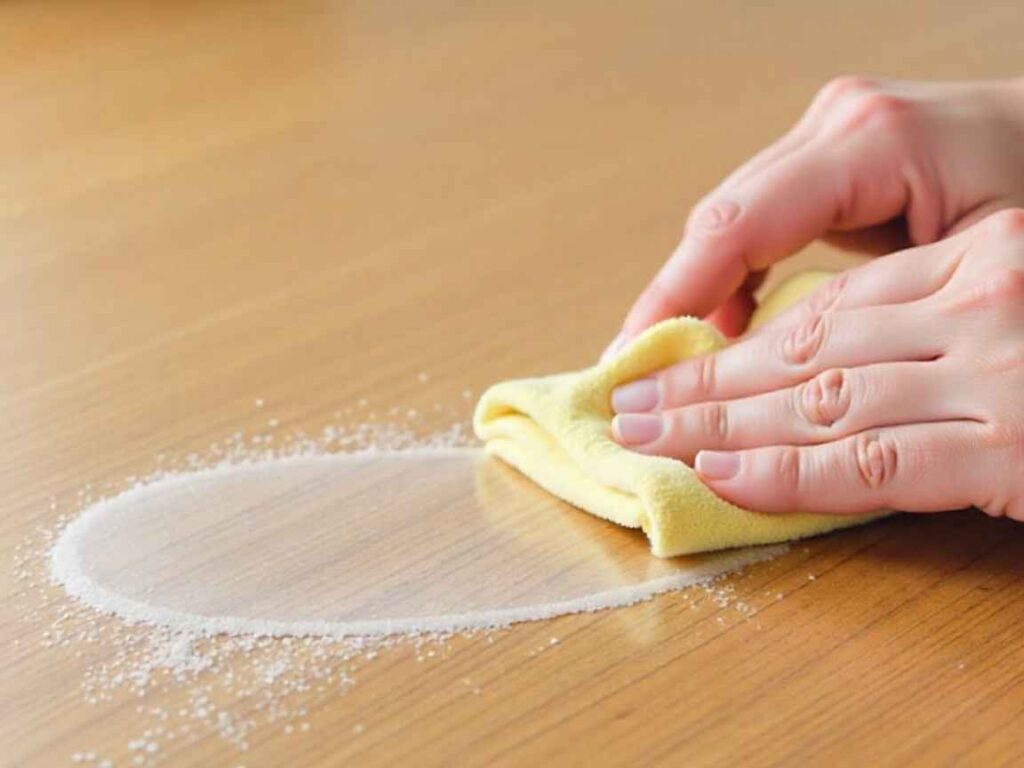
This simple homemade cleaner works well on moderate residue found on sealed or varnished wood.
What you’ll need:
- White vinegar
- Warm water
- Two soft cloths
- Small bowl
Steps:
- Mix white vinegar and warm water in a 1:3 ratio.
- Dampen a cloth in the solution.
- Rub gently on sticky areas until residue lifts.
- Wipe with a second cloth dampened in plain water.
- Dry thoroughly
4. Oil-Based Solutions — Dissolves While Polishing
Oil helps break down sticky glue and also conditions the wood. It’s safe to use on finished surfaces and won’t harm the protective coating. (How to Get Sticky Residue Off Wood, 2025)
What you’ll need:
- Vegetable oil, mineral oil, olive oil, or mayonnaise
- Soft cloth or paper towel
- Plastic scraper (optional)
- Mild dish soap
Steps:
- Apply a small amount of oil directly on the residue.
- Let it sit for 10-15 minutes to penetrate the adhesive.
- Rub gently with a soft cloth (use a plastic scraper for thick residue)
- Clean the area with a damp, soapy cloth to remove oil.
- Dry completely
5. Commercial Removers — Heavy-Duty for Stubborn Adhesive
Products like Goo Gone or WD-40 can remove tough adhesives that don’t come off with gentler methods. Only use them on finished wood. (Goo Gone, n.d.)
What you’ll need:
- Goo Gone or WD-40
- Lint-free microfiber cloth
- Soap solution
- Protective gloves (optional)
Steps:
- Test in an inconspicuous area first.
- Apply a small amount directly on the residue.
- Wait 2-5 minutes for the solution to penetrate
- Wipe away with a clean cloth.
- Clean with warm, soapy water to remove oil residue
- Dry thoroughly
Important: WD-40 is oil-based. Clean it completely if you plan to paint or refinish later.
6. Rubbing Alcohol/Mineral Spirits — Ideal for Deep Residue

These solvents can get rid of deeper residue on sturdy wood surfaces. Always test them first, since they might affect some finishes.
What you’ll need:
- 70% or 91% rubbing alcohol OR mineral spirits
- Cotton balls or a soft cloth
- Plastic scraper
- Clean, damp cloth
Steps:
- Apply alcohol or mineral spirits to a cloth or cotton ball (never directly on wood)
- Place the dampened cloth on the residue for about one minute.
- Rub gently in circular motions or along the grain.
- Use a plastic scraper for heavy buildup.
- Wipe with a damp cloth and dry.
7. Acetone — Last Resort for Bare Wood Only
Acetone is very strong and will remove most finishes, like lacquer, varnish, and polyurethane. Only use it if nothing else works, and only on unfinished wood. (Cabinets, Wood Finishes for Cabinetry, 2007)
What you’ll need:
- 100% acetone (nail polish remover)
- Cotton cloth or cotton balls
- Plastic scraper
- Clean, damp cloth
- Protective gloves
Steps:
- Test in a hidden spot to check for damage.
- Apply acetone to a cloth and rub gently on the residue.
- Once loosened, scrape with a plastic card.
- Alternate between acetone application and wiping with a damp cloth
- Check for remaining residue and dry thoroughly.
6 Ways to Prevent Sticky Residue
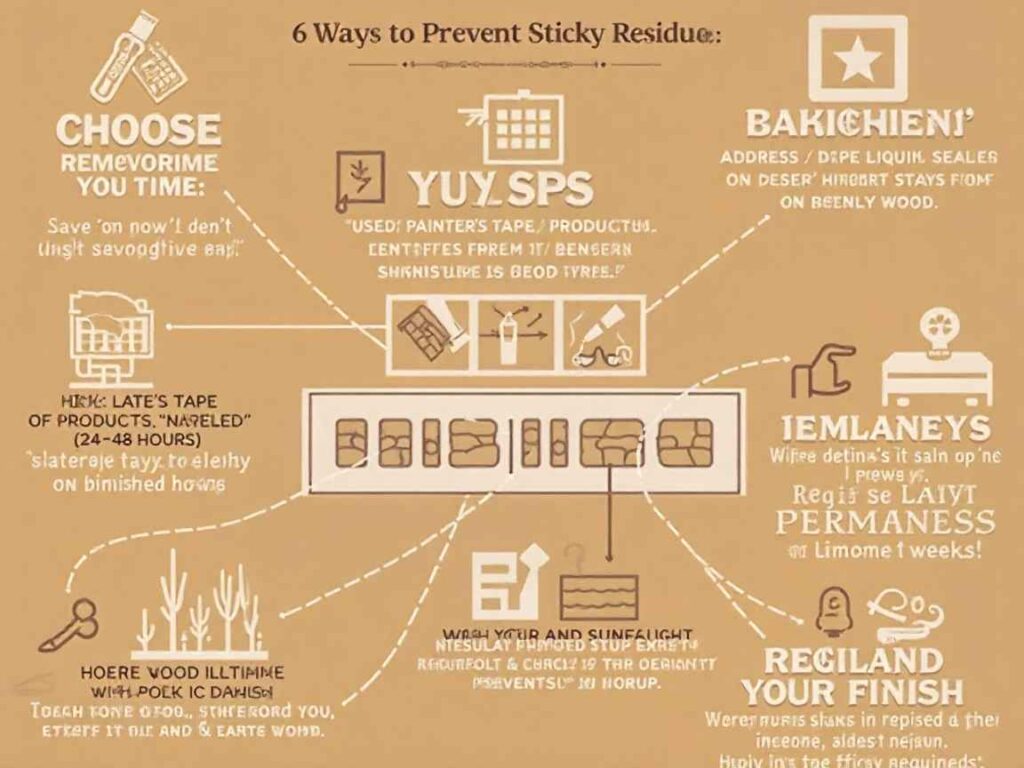
Preventing sticky residue saves you time and keeps your wood furniture in good shape:
Choose removable tape: Use painter’s tape or products labeled “residue-free” on finished wood.
Remove tape promptly: Don’t leave tape on for more than 24-48 hours. The longer it stays, the harder it is to remove.
Clean spills immediately: Address glue or liquid spills right away to prevent permanent stickiness.
Regular maintenance: Wipe your wood surfaces with diluted soap every two weeks. Regular cleaning prevents buildup.
Avoid heat and sunlight: High temperatures melt adhesive and cause it to bond more strongly to wood.
Check your finish: Worn finishes can become sticky. Inspect and repolish every six months if needed. (How To Get Sticky Stuff Off Finished Wood, 2011)
FAQ
What removes sticky adhesive from wood?
Effective methods include heat (hair dryer), home remedies (soap, vinegar), oil-based solutions (vegetable oil, mineral oil), stronger solvents (rubbing alcohol, mineral spirits), commercial removers (Goo Gone, WD-40), and, as a last resort, acetone. Start with the gentlest method appropriate for your wood’s finish.
Does rubbing alcohol remove sticky residue from wood?
Yes, rubbing alcohol effectively removes sticky residue. Apply it to a cloth or cotton ball, place it on the stain for a few minutes, then rub gently and wipe clean. Never pour rubbing alcohol directly onto wood, as it may damage the finish.
How do you remove gummy buildup from wood furniture?
Try diluted Murphy’s Oil Soap or vinegar mixed with water first. For stubborn buildup, use rubbing alcohol, mineral spirits, or acetone. Always test in a small, hidden area first to avoid damaging the finish.
Is Goo Gone safe on wood?
Yes, Goo Gone is safe for finished and sealed wood. Don’t use it on unfinished, raw, or unsealed wood. Test in an inconspicuous area first and wipe clean with soapy water after use to remove any residue. (Goo Gone, n.d.)
Ready to Restore Your Wood?
Sticky residue can be annoying, but you can fix it with the right steps. Begin with the gentlest method for your wood’s finish and only try stronger ones if you need to. This way, you protect your wood and get rid of the mess.
Be patient—taking your time is worth it. Using harsh chemicals too quickly can damage your wood’s finish. Test each method first, go slowly, and your furniture will look great again.




